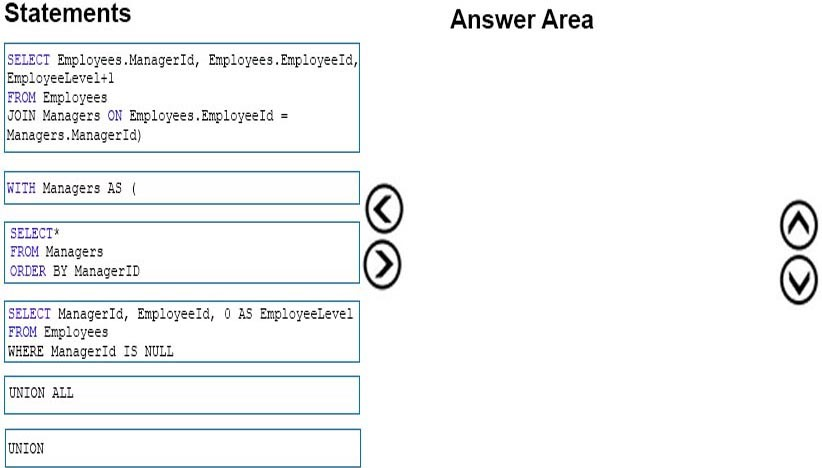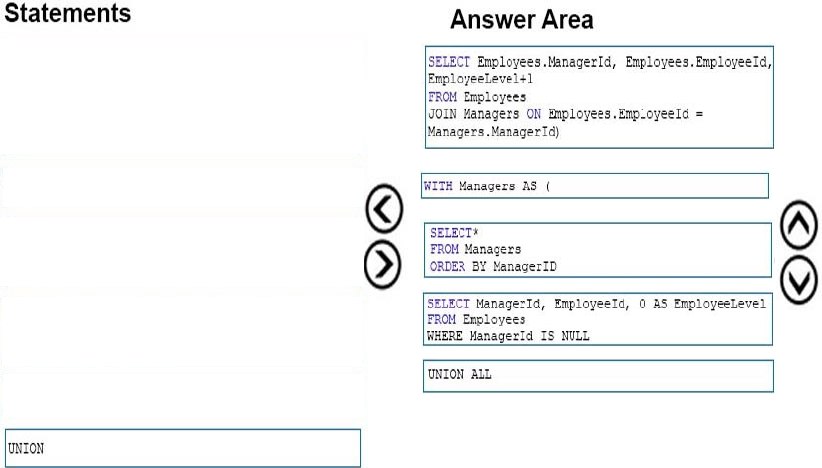

DRAG DROP -
You have a database named DB1 that contains a table named HR.Employees. HR.Employees contains two columns named ManagerID and EmployeeID.
ManagerID refers to EmployeeID.
You need to create a query that returns a list of all employees, the manager of each employee, and the numerical level of each employee in your organization's hierarchy.
Which five statements should you add to the query in sequence? To answer, move the appropriate statements from the list of statements to the answer area and arrange them in the correct order.
Select and Place:

Dieter
Highly Voted 5 years, 10 months agogetstoopid
Highly Voted 4 years, 10 months agoPostarion
Most Recent 5 years, 4 months agoanonimdom
5 years, 4 months agoOndaenergetica
5 years, 4 months agoAnette
5 years agoAnette
5 years agosunz_1
4 years, 9 months agohgi
5 years, 5 months agoPrides
5 years, 4 months agoPrides
5 years, 4 months ago